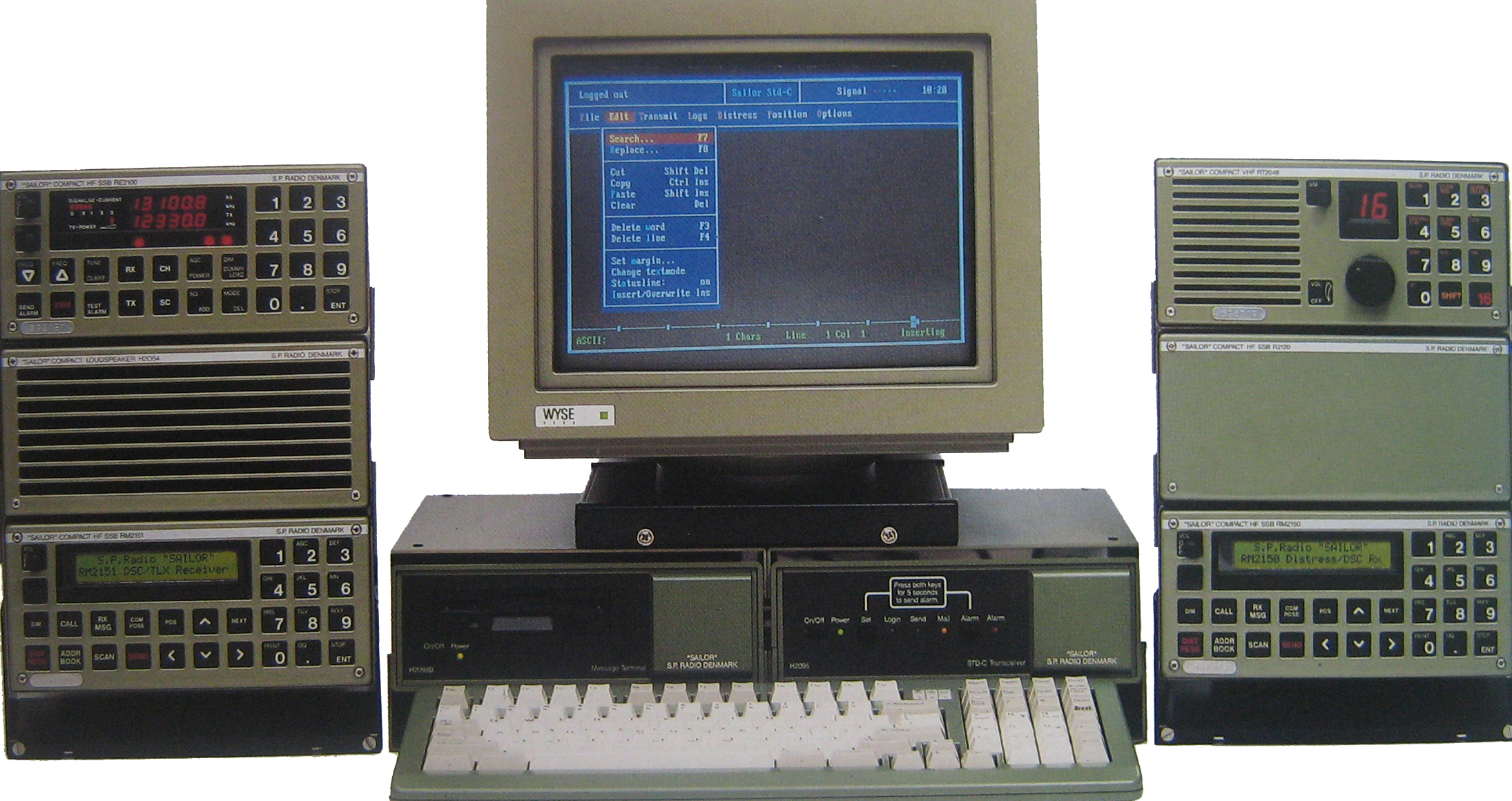Inmarsat-C on:
[Wikipedia]
[Google]
[Amazon]
 Inmarsat-C is a two-way, packet data service operated by the telecommunications company
Inmarsat-C is a two-way, packet data service operated by the telecommunications company Q&A: The Box
Talking Point, BBC News, 11 September 2008. BBC News followed a
Safety communications using Inmarsat C
Emergency communication Maritime communication
Inmarsat
Inmarsat is a British communications satellite, satellite telecommunications company, offering global mobile services. It provides telephone and data services to users worldwide, via portable or mobile terminals which communicate with groun ...
which operates between mobile earth stations (MES) and land earth stations (LES). It became fully operational after a period of pre-operational trials in January 1991. The advantages of Inmarsat-C compared to Inmarsat-A are low cost, smaller and uses a smaller omni-directional antenna
In radio communication, an omnidirectional antenna is a class of antenna which radiates equal radio power in all directions perpendicular to an axis (azimuthal directions), with power varying with angle to the axis (elevation angle), declining t ...
. The disadvantage is that voice communication is not possible with Inmarsat-C. The service is approved for use under the Global Maritime Distress and Safety System (GMDSS
The Global Maritime Distress and Safety System (GMDSS) is a worldwide system for automated emergency signal communication for ships at sea developed by the United Nations' International Maritime Organization (IMO) as part of the SOLAS Convention. ...
), meets the requirements for Ship Security Alert System
The Ship Security Alert System (SSAS) is provided to a ship for the purpose of transmitting a security alert to the shore to indicate to a competent authority (typically the ship's flag State) that the security of the ship is under threat or has b ...
s (SSAS) defined by the International Maritime Organization
The International Maritime Organization (IMO; ; ) is a List of specialized agencies of the United Nations, specialized agency of the United Nations responsible for regulating maritime transport. The IMO was established following agreement at a ...
(IMO) and is the most widely used service in fishing Vessel Monitoring Systems ( VMS).
The service works with a store-and-forward method which enables interface with data network transfer including; e-mail; SMS
Short Message Service, commonly abbreviated as SMS, is a text messaging service component of most telephone, Internet and mobile device systems. It uses standardized communication protocols that let mobile phones exchange short text messages, t ...
; telex; remote monitoring; tracking (position reporting); chart and weather updates; maritime safety information
The Global Maritime Distress and Safety System (GMDSS) is a worldwide system for automated emergency signal communication for ships at sea developed by the United Nations' International Maritime Organization (IMO) as part of the SOLAS Convention. ...
(MSI); maritime security; GMDSS; and SafetyNET and FleetNET services; two-way messaging; data reporting
Data reporting is the process of collecting and submitting data.
The effective management of any organization relies on accurate data. Inaccurate data reporting can lead to poor decision-making based on erroneous evidence. Data reporting is diff ...
and polling; Safety/Emergency alerting.
The service is operated via an Inmarsat-C Transceiver or a lower-power mini-C Transceiver. Data transfers between MES and LES at a rate of 600 bits/second. The frequencies for transmitting (TX) are 1626.5 MHz -1645.5 MHz and for receiving (RX) are 1530.0 MHz - 1545.0 MHz.
The service is available for maritime, land mobile and aeronautical use.
This system was also used to track the BBC's project " The Box".Talking Point, BBC News, 11 September 2008. BBC News followed a
container
A container is any receptacle or enclosure for holding a product used in storage, packaging, and transportation, including shipping.
Things kept inside of a container are protected on several sides by being inside of its structure. The term ...
around the world for a year to tell stories of globalization and the world economy.
Maritime Rescue Coordination Centers
The headquarters for Inmarsat C is located in London. The four Ocean Regions that are covered by Inmarsat C are: * the Atlantic Ocean Region East (AOR-E) * Atlantic Ocean Region West (AOR-W) * Pacific Ocean Region (POR) * Indian Ocean Region (IOR). Within each ocean region, there are approximately four or five Maritime Rescue Coordination Centers (MRCC). In total, there are over twenty MRCC's in the world, and each MRCC station contributes to a certain MRCC area. The MRCC stations are located in: *Wellington (New Zealand)-POR *Aussaguel (France)-IOR/AOR-E/AOR-W *Beijing (China)-IOR/POR *Burum (The Netherlands)-AOR-E/AOR-W/IOR *Elk (Norway)-AOR-E/AOR-W/IOR *Emeq Haela (Israel)-AOR-E/IOR * Fucino (Italy) AOR-E/IOR * Ex Goonhilly @ Burum (Netherlands) *Hai Phong (Vietnam)-IOR/POR *Kumsan (S. Korea) IOR/POR *Lakhadaria (Algeria) AOR-E * Nakhodka (Russia)-POR *Nudol (Russian Fed.)-AOR-E/IOR *Perth (Australia)-IOR/POR *Psary (Poland)-AOR-E/IOR *Pune (India)-IOR *Santa Paula (USA)-POR *Sentosa (Singapore)-IOR/POR * Southbury (USA)-AOR-E/AOR-W * Tangua (Brazil)-AOR-E * Thermopylae (Greece)-AOR-E * Yamaguchi (Japan)-IOR/POR.References
{{ReflistExternal links
Safety communications using Inmarsat C
Emergency communication Maritime communication